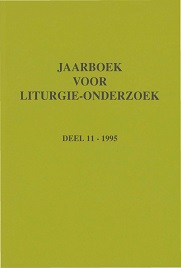Liturgische melodieën bij Dirk Volkertsz. Coornhert (1522-1590)
Abstract
Most Dutch songs of the Golden Age are contrafacta; i.e. the songtexts got existing melodies. Sometimes poets chose for their songs melodies from the Genevan psalter, ed. 1562. A Dutch version of it came out in 1566; the translator and editor was Petrus Datheen, a rigid calvinist. D.V. Coornhert (1522-1590), a fervent opponent of the ideas of Calvin, was the first Dutch playwright who chose melodies from the calvinistic prayer-book for two songs of his play Vanden bruydt Christi (about 1567). In five of Coornherts plays (written between 1567 and 1582) we meet fifteen of such psalter-contrafacta. Not only for his dramatic works Coornhert wrote such songs, but also for his Lied-boeck, a song-book from 1575 with a supplement (Byvoeghsel) from 1587. In this collection of about a hundred poems there are no less than sixty psalter-contrafacta. Finally there are 23 psalter-contrafacta in Coornherts translation of Boethius' De Consolatione Philosophiae. Via this translation Boethius' fourth-century 'metra' received sixteenth-century calvinistic melodies. Everything goes to show that Coornhert preferred liturgic melodies especially when he was translating and rewriting poetical parts from the bible or from the classics. For his nearly hundred psalter-contrafacta Coornhert used 39 liturgic melodies. In my paper I try to proof that Coornhert often chose the less popular psalm-melodies as well as the oldest melodies dating back to the years about 1540. My conclusion on this point is, that he had not got acquainted with these melodies from the psalter of Datheen, but from the older, French collections of Marot and/or the psalms of Jan Utenhove. Coornherts works were intended among other things for the latin schools and the 'Rederijkerskamers,' the literary guilds for the intelligentsia in the cities. Also in view of the metrics in Coornherts verse, it seems probable that in performances the melodies of the psalter-contrafacta were sung rhythmically, unlike the divine services in the Low Countries, where the psalms and hymns were sung isometrically, with long-drawn tones.


